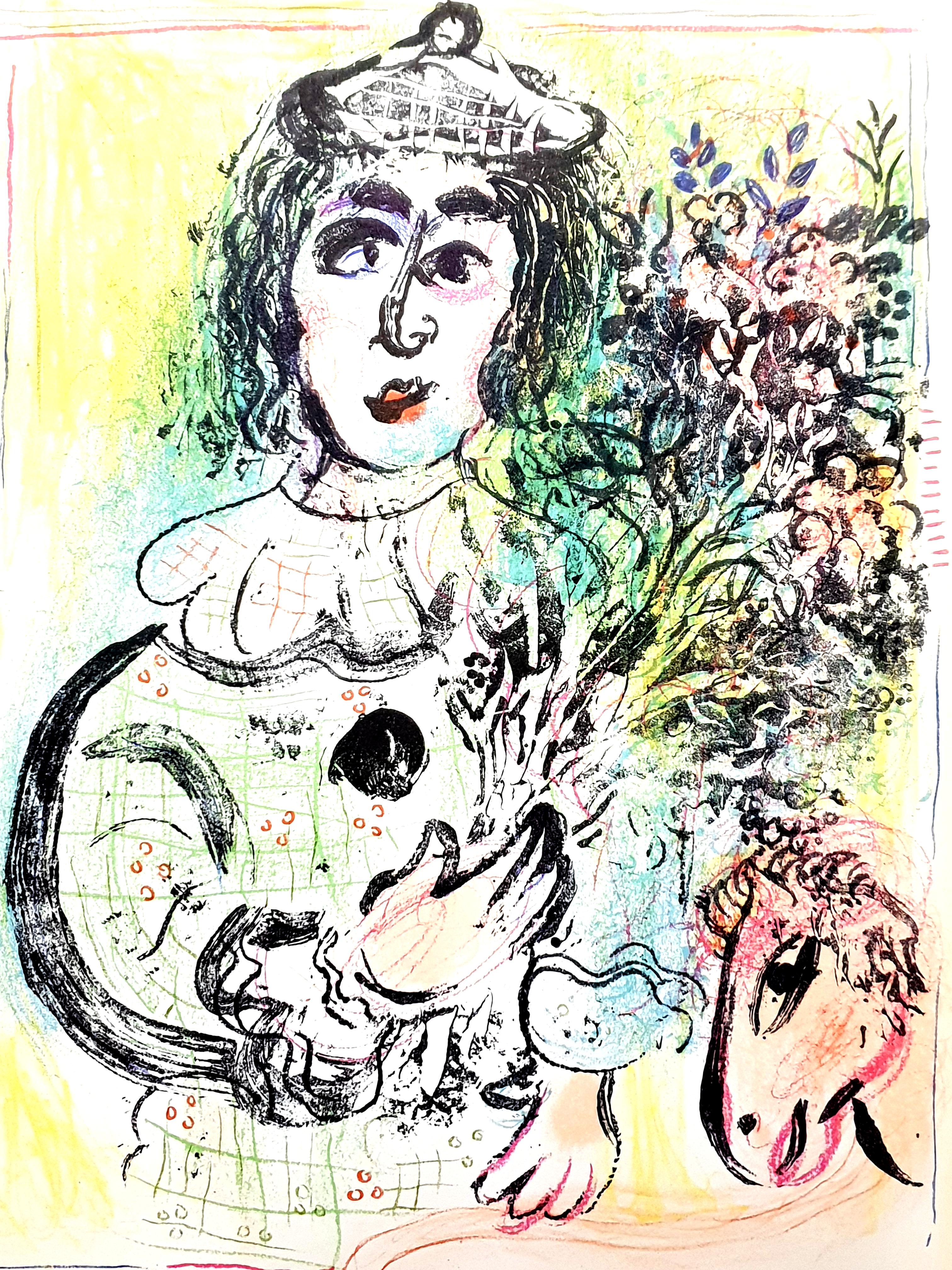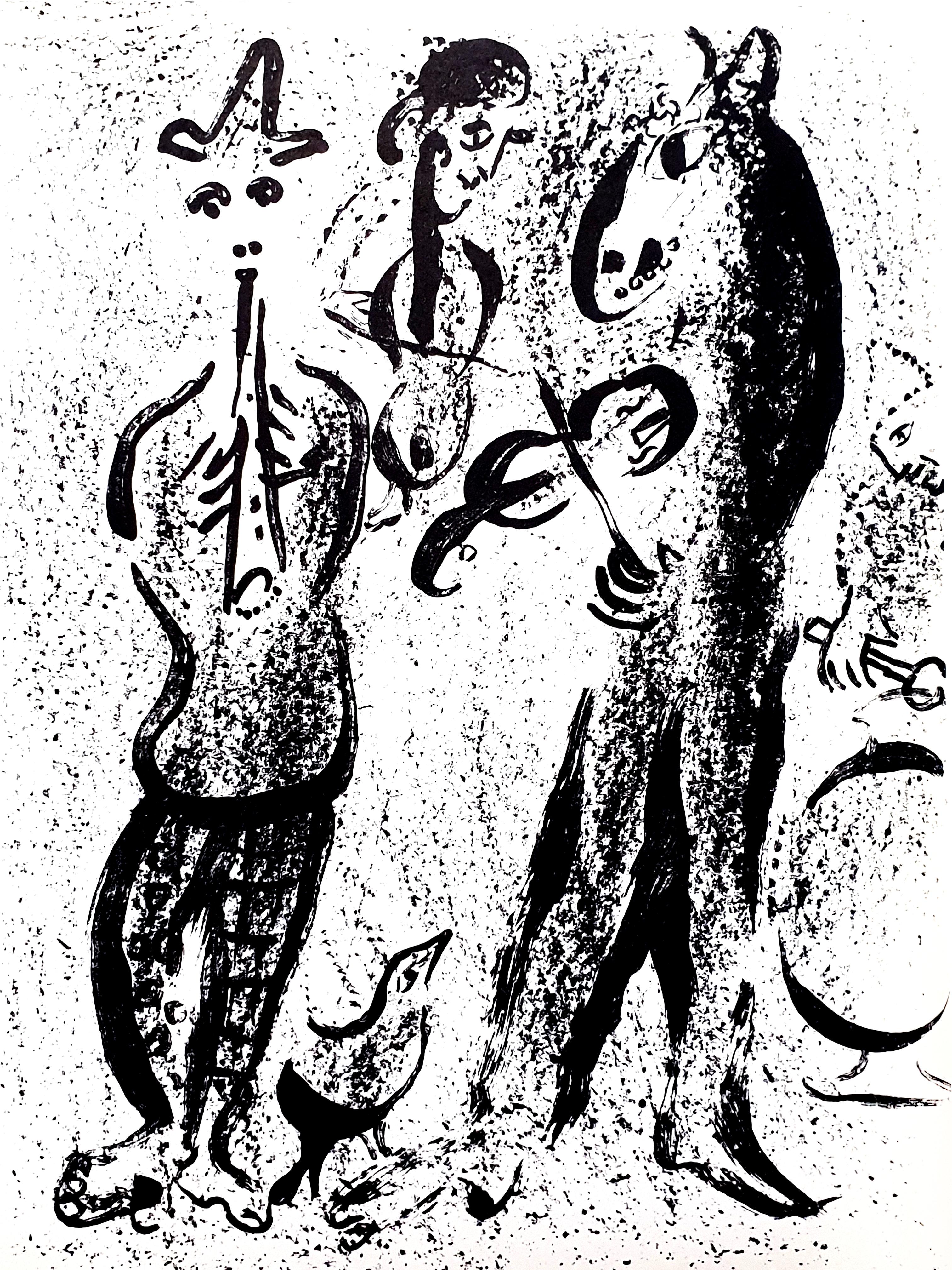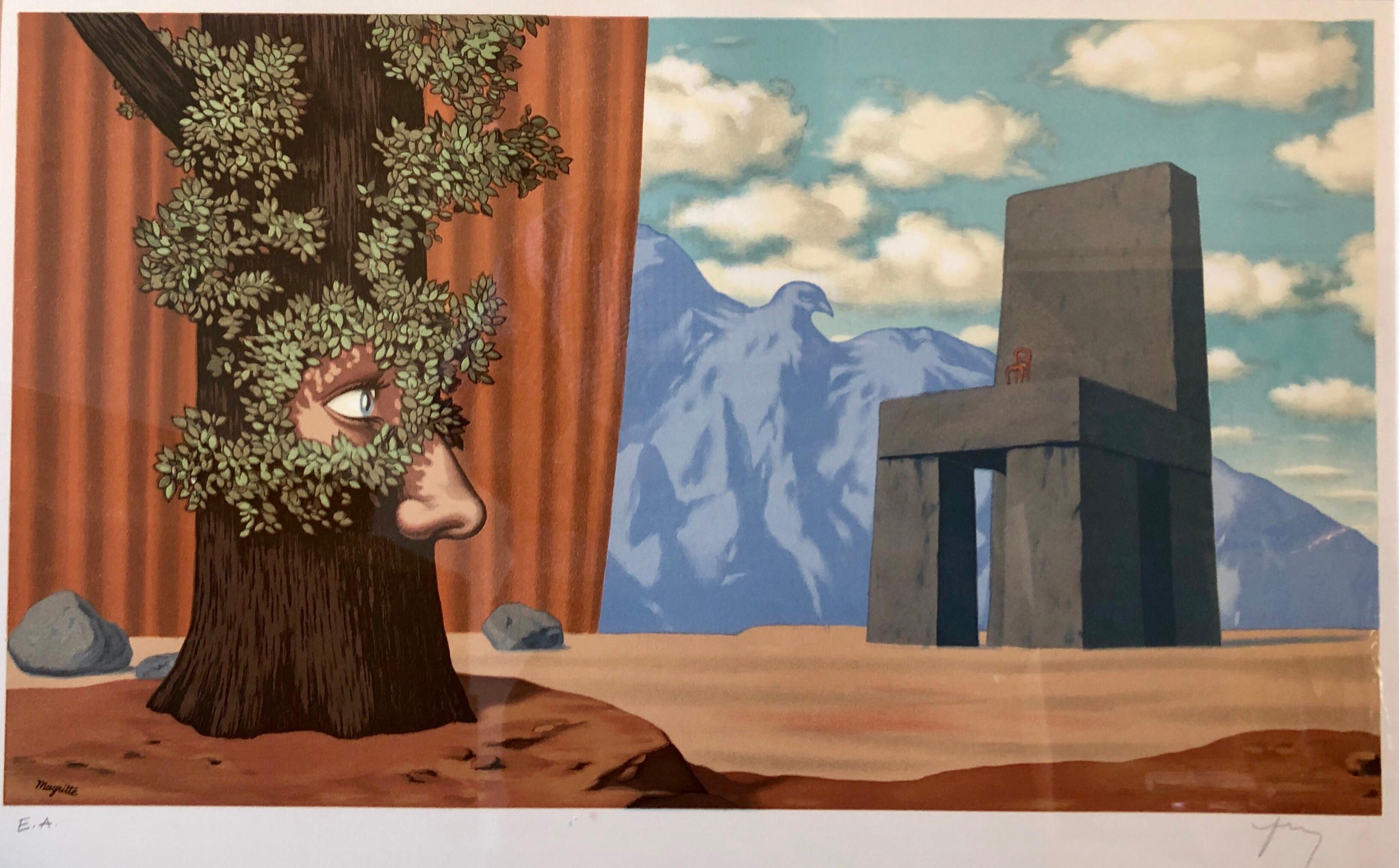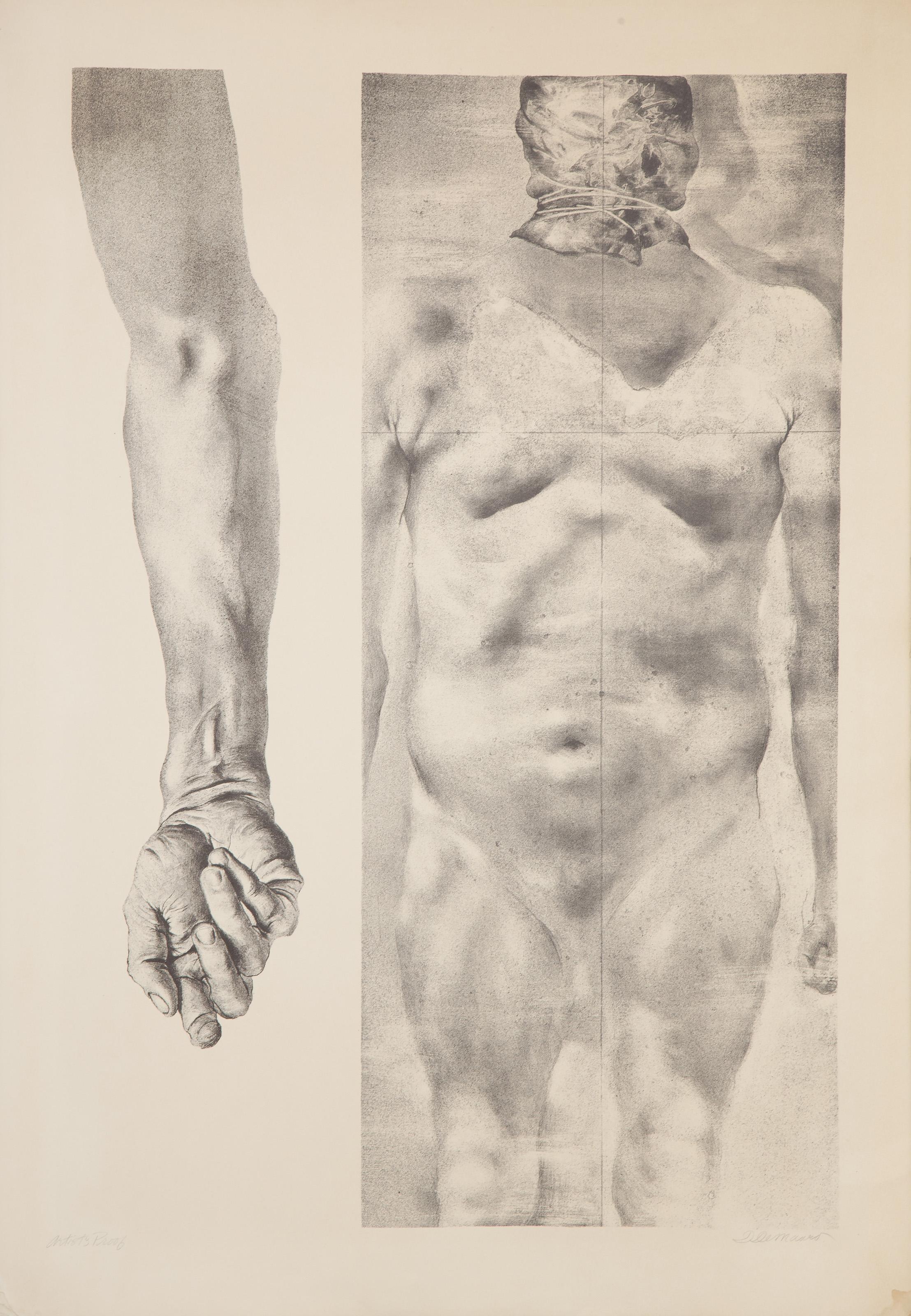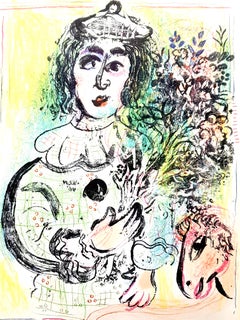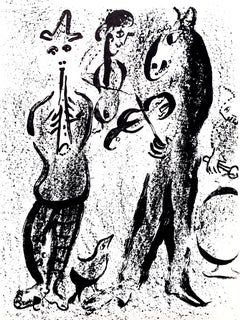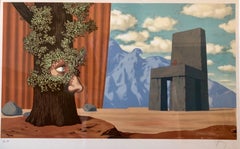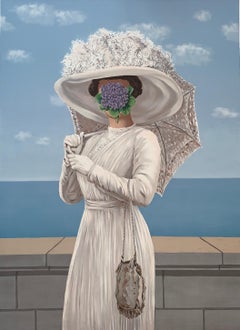Items Similar to Menorah : Light of Hope - Original lithograph, Signed
Want more images or videos?
Request additional images or videos from the seller
1 of 10
Jules PERAHIMMenorah : Light of Hope - Original lithograph, Signed1974
1974
About the Item
Jules Perahim (1914-2008)
Menorah : Light of Hope, 1974
Original lithograph
Signed in pencil by the artist
Numbered / 199
On Arches vellum 56 x 38 cm (c. 22 x 15 inches)
INFORMATION : From portfolio "Alphabet" edited by Galerie Calatchi (Paris) and printed in Grapholith workshop.
The lithograph is inspired by the symbols of the Hebrew Alphabet.
Excellent condition
- Creator:Jules PERAHIM (1914 - 2008, Romanian, French)
- Creation Year:1974
- Dimensions:Height: 22.05 in (56 cm)Width: 14.97 in (38 cm)
- Medium:
- Movement & Style:
- Period:
- Condition:
- Gallery Location:Paris, FR
- Reference Number:1stDibs: LU464312989322
About the Seller
4.9
Platinum Seller
Premium sellers with a 4.7+ rating and 24-hour response times
Established in 2010
1stDibs seller since 2016
3,597 sales on 1stDibs
Typical response time: <1 hour
- ShippingRetrieving quote...Shipping from: Paris, France
- Return Policy
Authenticity Guarantee
In the unlikely event there’s an issue with an item’s authenticity, contact us within 1 year for a full refund. DetailsMoney-Back Guarantee
If your item is not as described, is damaged in transit, or does not arrive, contact us within 7 days for a full refund. Details24-Hour Cancellation
You have a 24-hour grace period in which to reconsider your purchase, with no questions asked.Vetted Professional Sellers
Our world-class sellers must adhere to strict standards for service and quality, maintaining the integrity of our listings.Price-Match Guarantee
If you find that a seller listed the same item for a lower price elsewhere, we’ll match it.Trusted Global Delivery
Our best-in-class carrier network provides specialized shipping options worldwide, including custom delivery.More From This Seller
View AllJean COCTEAU and Raymond MORETTI : The Foreign - Original Hansigned Lithograph
By Jean Cocteau
Located in Paris, IDF
Jean Cocteau and Raymond Moretti
News From Foreign
Original lithograph
Printed signature in the plate, handsigned by Raymond Moretti
Numbered / 79
On Arches vellum 65 x 50 cm (c. 25...
Category
1970s Surrealist Figurative Prints
Materials
Lithograph
Jean COCTEAU and Raymond MORETTI : The Evolution - Original Hansigned Lithograph
By Jean Cocteau
Located in Paris, IDF
Jean Cocteau and Raymond Moretti
Earth's Evolution
Original lithograph
Printed signature in the plate, handsigned by Raymond Moretti
Numbered 1/79 - Very look for proof bearing n°1...
Category
1970s Surrealist Figurative Prints
Materials
Lithograph
Marc CHAGALL : Circus, Revolution - Lithograph exhibition poster - Mourlot
By Marc Chagall
Located in Paris, IDF
Marc CHAGALL
Circus - Revolution, 1963
Lithograph after the painting, engraved by Charles Sorlier under the supervision of Marc Chagall
Printed in Atelier Mourlot
Plate signed (prin...
Category
1960s Surrealist Figurative Prints
Materials
Lithograph
Jean COCTEAU and Raymond MORETTI : Happy Days - Original Hansigned Lithograph
By Jean Cocteau
Located in Paris, IDF
Jean Cocteau and Raymond Moretti
Happy Days
Original lithograph
Printed signature in the plate, handsigned by Raymond Moretti
Numbered 1/79 - Very look for artist proof bearing n°1
...
Category
1970s Surrealist Figurative Prints
Materials
Lithograph
Jean COCTEAU and Raymond MORETTI : The kiss- Original Hansigned Lithograph, 1973
By Jean Cocteau
Located in Paris, IDF
Jean Cocteau and Raymond Moretti
The Kiss
Original lithograph
Printed signature in the plate, handsigned by Raymond Moretti
Numbered 1/79 - Very look for artist proof bearing n°1
On...
Category
1970s Surrealist Figurative Prints
Materials
Lithograph
Jean COCTEAU and Raymond MORETTI : The Earth - Original Hansigned Lithograph
By Jean Cocteau
Located in Paris, IDF
Jean Cocteau and Raymond Moretti
The Earth And The Sun
Original lithograph
Printed signature in the plate, handsigned by Raymond Moretti
Numbered 1/79 - Very look for proof bearing ...
Category
1970s Surrealist Figurative Prints
Materials
Lithograph
You May Also Like
Marc Chagall - Flowered Clown - Original Lithograph
By Marc Chagall
Located in Collonge Bellerive, Geneve, CH
Marc Chagall
Original Lithograph
1963
Dimensions: 32 x 24 cm
From Chagall Lithograph II
Reference: Mourlot 399
Condition : Excellent
Unsigned and unumbered as issued
Category
1960s Surrealist Figurative Prints
Materials
Lithograph
Marc Chagall - Original Lithograph
By Marc Chagall
Located in Collonge Bellerive, Geneve, CH
Marc Chagall
Original Lithograph
1963
Dimensions: 32 x 24 cm
Reference: Chagall Lithographe 1957-1962. VOLUME II.
Unsigned edition of over 5,000
Condition : Excellent
Marc Chagall (born in 1887)
Marc Chagall was born in Belarus in 1887 and developed an early interest in art. After studying painting, in 1907 he left Russia for Paris, where he lived in an artist colony on the city’s outskirts. Fusing his own personal, dreamlike imagery with hints of the fauvism and cubism popular in France at the time, Chagall created his most lasting work—including I and the Village (1911)—some of which would be featured in the Salon des Indépendants exhibitions. After returning to Vitebsk for a visit in 1914, the outbreak of WWI trapped Chagall in Russia. He returned to France in 1923 but was forced to flee the country and Nazi persecution during WWII. Finding asylum in the U.S., Chagall became involved in set and costume design before returning to France in 1948. In his later years, he experimented with new art forms and was commissioned to produce numerous large-scale works. Chagall died in St.-Paul-de-Vence in 1985.
The Village
Marc Chagall was born in a small Hassidic community on the outskirts of Vitebsk, Belarus, on July 7, 1887. His father was a fishmonger, and his mother ran a small sundries shop in the village. As a child, Chagall attended the Jewish elementary school, where he studied Hebrew and the Bible, before later attending the Russian public school. He began to learn the fundamentals of drawing during this time, but perhaps more importantly, he absorbed the world around him, storing away the imagery and themes that would feature largely in most of his later work.
At age 19 Chagall enrolled at a private, all-Jewish art school and began his formal education in painting, studying briefly with portrait artist Yehuda Pen. However, he left the school after several months, moving to St. Petersburg in 1907 to study at the Imperial Society for the Protection of Fine Arts. The following year, he enrolled at the Svanseva School, studying with set designer Léon Bakst, whose work had been featured in Sergei Diaghilev's Ballets Russes. This early experience would prove important to Chagall’s later career as well.
Despite this formal instruction, and the widespread popularity of realism in Russia at the time, Chagall was already establishing his own personal style, which featured a more dreamlike unreality and the people, places and imagery that were close to his heart. Some examples from this period are his Window Vitebsk (1908) and My Fianceé with Black Gloves (1909), which pictured Bella Rosenfeld, to whom he had recently become engaged.
The Beehive
Despite his romance with Bella, in 1911 an allowance from Russian parliament member and art patron Maxim Binaver enabled Chagall to move to Paris, France. After settling briefly in the Montparnasse neighborhood, Chagall moved further afield to an artist colony known as La Ruche (“The Beehive”), where he began to work side by side with abstract painters such as Amedeo Modigliani and Fernand Léger as well as the avant-garde poet Guillaume Apollinaire. At their urging, and under the influence of the wildly popular fauvism and cubism, Chagall lightened his palette and pushed his style ever further from reality. I and the Village (1911) and Homage to Apollinaire (1912) are among his early Parisian works, widely considered to be his most successful and representative period.
Though his work stood stylistically apart from his cubist contemporaries, from 1912 to 1914 Chagall exhibited several paintings at the annual Salon des Indépendants exhibition, where works by the likes of Juan Gris, Marcel Duchamp and Robert Delaunay were causing a stir in the Paris art world. Chagall’s popularity began to spread beyond La Ruche, and in May 1914 he traveled to Berlin to help organize his first solo exhibition, at Der Sturm Gallery. Chagall remained in the city until the highly acclaimed show opened that June. He then returned to Vitebsk, unaware of the fateful events to come.
War, Peace and Revolution
In August 1914 the outbreak of World War I precluded Chagall’s plans to return to Paris. The conflict did little to stem the flow of his creative output, however, instead merely giving him direct access to the childhood scenes so essential to his work, as seen in paintings such as Jew in Green (1914) and Over Vitebsk (1914). His paintings from this period also occasionally featured images of the war’s impact on the region, as with Wounded Soldier (1914) and Marching (1915). But despite the hardships of life during wartime, this would also prove to be a joyful period for Chagall. In July 1915 he married Bella, and she gave birth to a daughter, Ida, the following year. Their appearance in works such as Birthday (1915), Bella and Ida by the Window (1917) and several of his “Lovers” paintings give a glimpse of the island of domestic bliss that was Chagall’s amidst the chaos.
To avoid military service and stay with his new family, Chagall took a position as a clerk in the Ministry of War Economy in St. Petersburg. While there he began work on his autobiography and also immersed himself in the local art scene, befriending novelist Boris Pasternak, among others. He also exhibited his work in the city and soon gained considerable recognition. That notoriety would prove important in the aftermath of the 1917 Russian Revolution when he was appointed as the Commissar of Fine Arts in Vitebsk. In his new post, Chagall undertook various projects in the region, including the 1919 founding of the Academy of the Arts. Despite these endeavors, differences among his colleagues eventually disillusioned Chagall. In 1920 he relinquished his position and moved his family to Moscow, the post-revolution capital of Russia.
In Moscow, Chagall was soon commissioned to create sets and costumes for various productions at the Moscow State Yiddish...
Category
1960s Surrealist Figurative Prints
Materials
Lithograph
Surrealist Dream Lithograph Belgian Master Magritte Pencil Signed by Mourlot
By (after) René Magritte
Located in Surfside, FL
Artist: Rene Magritte (after), Belgian (1898 - 1967)
Title: (from les Enfants Trouvés) Les Claires-Voies d'un Jeune Regard Embaument La Fête d'un Vieil Arbre
Year of original paintin...
Category
1960s Surrealist Landscape Prints
Materials
Lithograph
La Grande Guerre - 20th Century, Surrealist, Lithograph, Figurative Print
By (after) René Magritte
Located in Sint-Truiden, BE
Color lithograph after the 1964 oil on canvas by René Magritte, printed signature of Magritte and numbered from the edition of 300.
The lithograph features the dry stamps of the Mag...
Category
20th Century Surrealist Figurative Prints
Materials
Lithograph
Crucifixion (Christ of Gala)
By Salvador Dalí
Located in Hollywood, FL
ARTIST: Salvador Dali
TITLE: Crucifixion (Christ of Gala)
MEDIUM: 2 Lithographs
SIGNED: One Lithograph is Hand Signed and one lithograph bears an emb...
Category
1980s Surrealist Figurative Prints
Materials
Lithograph
Torso and Arm, Surrealist Lithograph by Donald DeMauro
Located in Long Island City, NY
Donald DeMauro, American (1936 - ) - Torso and Arm, Medium: Lithograph, signed and numbered in pencil, Edition: 70, Image Size: 31 x 21 inches, Size: 35.5 x 25 in. (90.17 x 63.5 cm)
Category
Mid-20th Century Surrealist Figurative Prints
Materials
Lithograph
